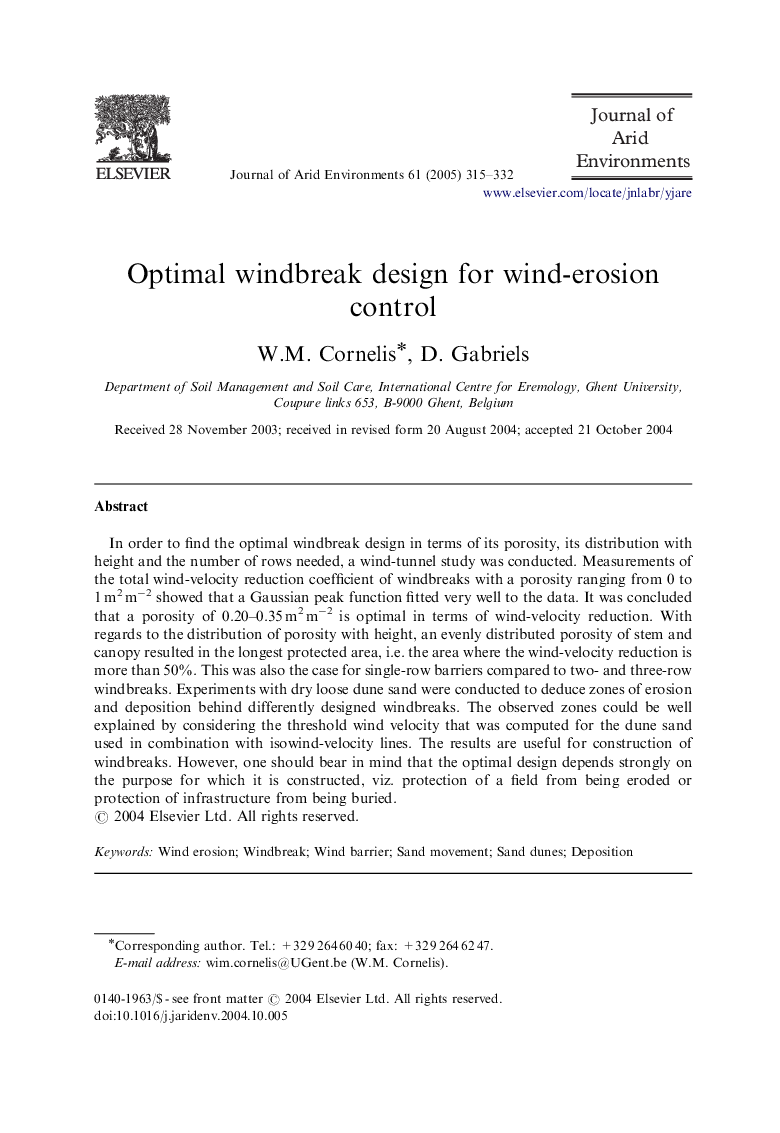| Article ID | Journal | Published Year | Pages | File Type |
|---|---|---|---|---|
| 9447923 | Journal of Arid Environments | 2005 | 18 Pages |
Abstract
In order to find the optimal windbreak design in terms of its porosity, its distribution with height and the number of rows needed, a wind-tunnel study was conducted. Measurements of the total wind-velocity reduction coefficient of windbreaks with a porosity ranging from 0 to 1Â m2Â mâ2 showed that a Gaussian peak function fitted very well to the data. It was concluded that a porosity of 0.20-0.35Â m2Â mâ2 is optimal in terms of wind-velocity reduction. With regards to the distribution of porosity with height, an evenly distributed porosity of stem and canopy resulted in the longest protected area, i.e. the area where the wind-velocity reduction is more than 50%. This was also the case for single-row barriers compared to two- and three-row windbreaks. Experiments with dry loose dune sand were conducted to deduce zones of erosion and deposition behind differently designed windbreaks. The observed zones could be well explained by considering the threshold wind velocity that was computed for the dune sand used in combination with isowind-velocity lines. The results are useful for construction of windbreaks. However, one should bear in mind that the optimal design depends strongly on the purpose for which it is constructed, viz. protection of a field from being eroded or protection of infrastructure from being buried.
Related Topics
Physical Sciences and Engineering
Earth and Planetary Sciences
Earth-Surface Processes
Authors
W.M. Cornelis, D. Gabriels,
